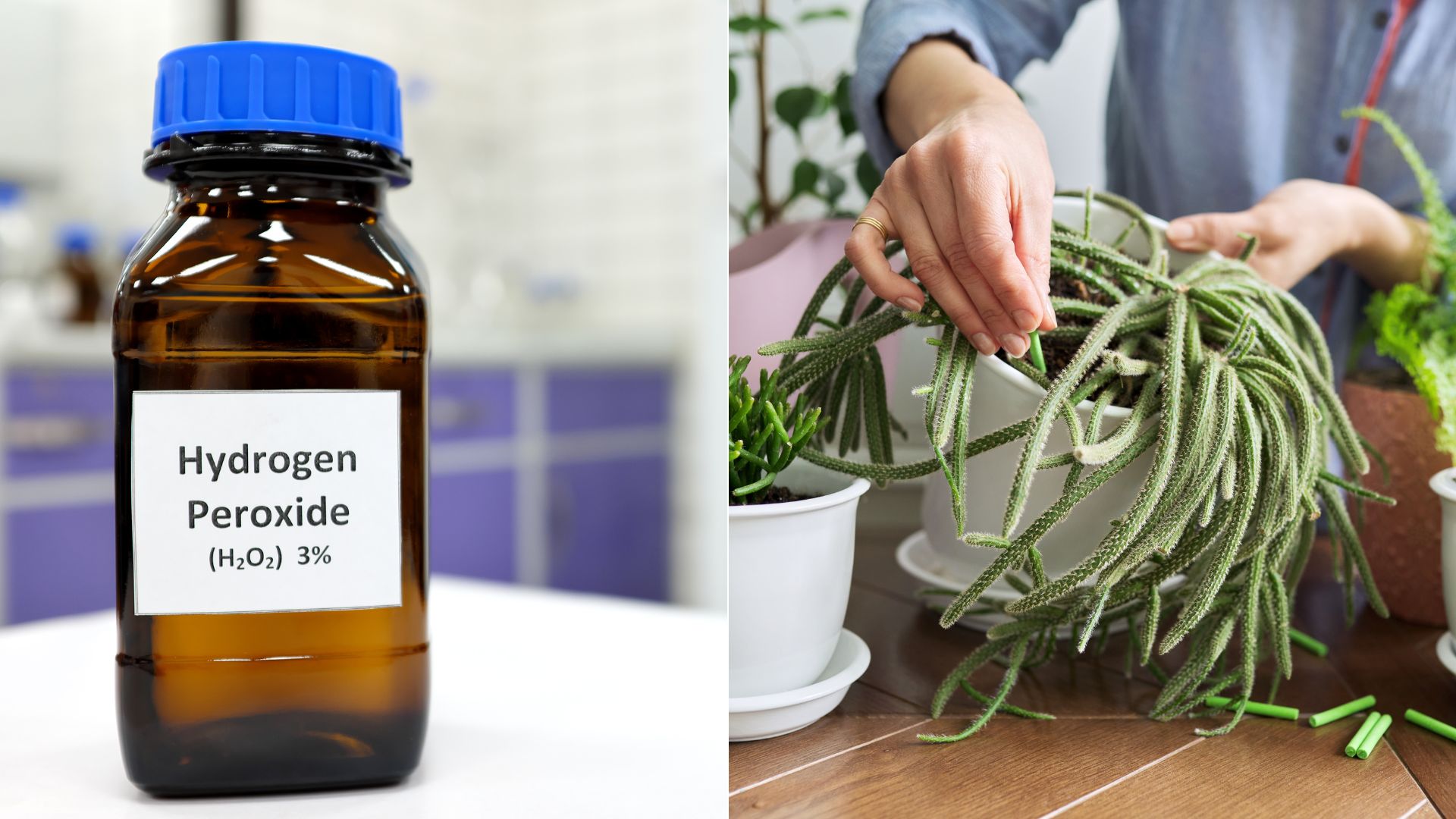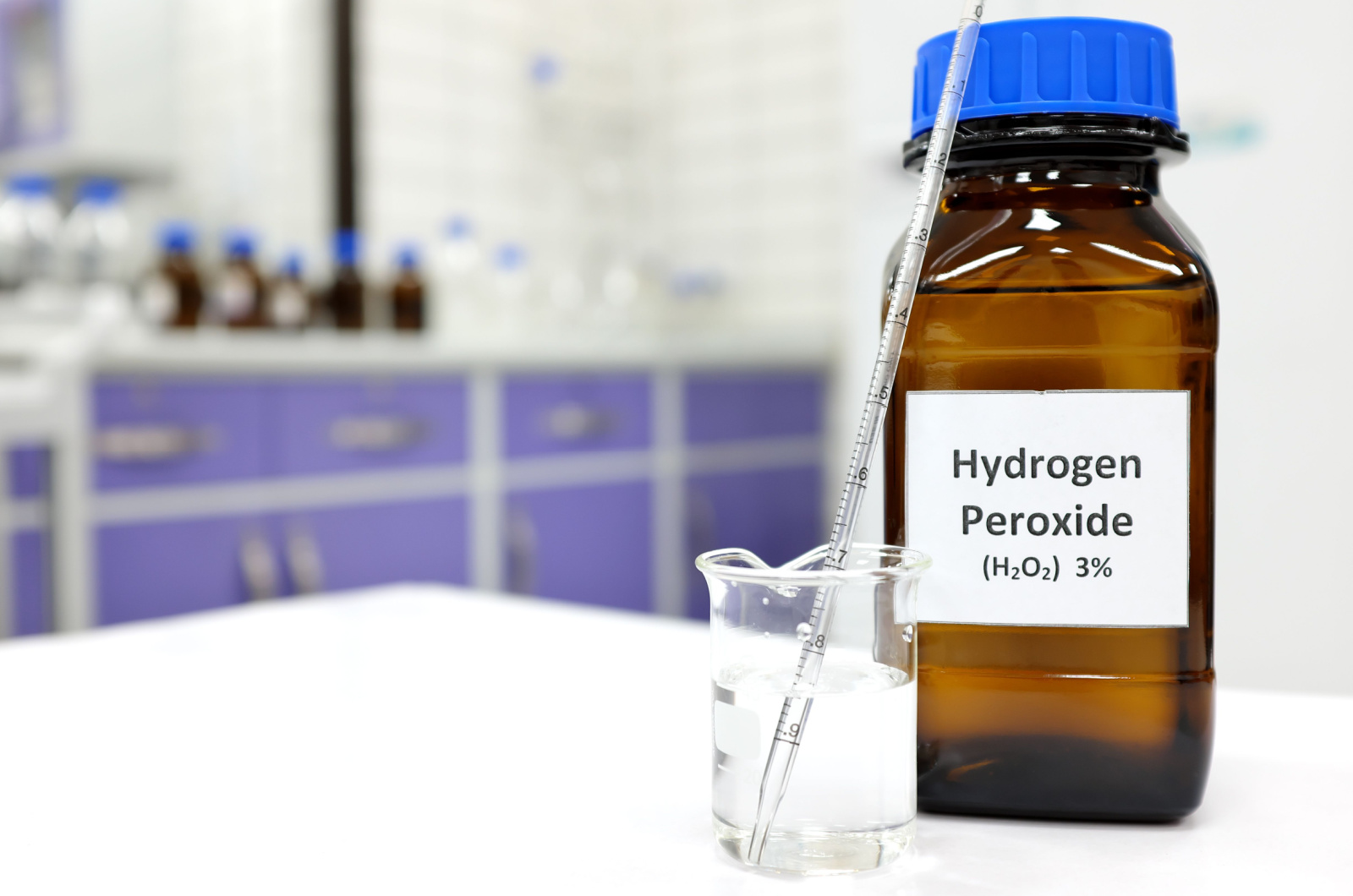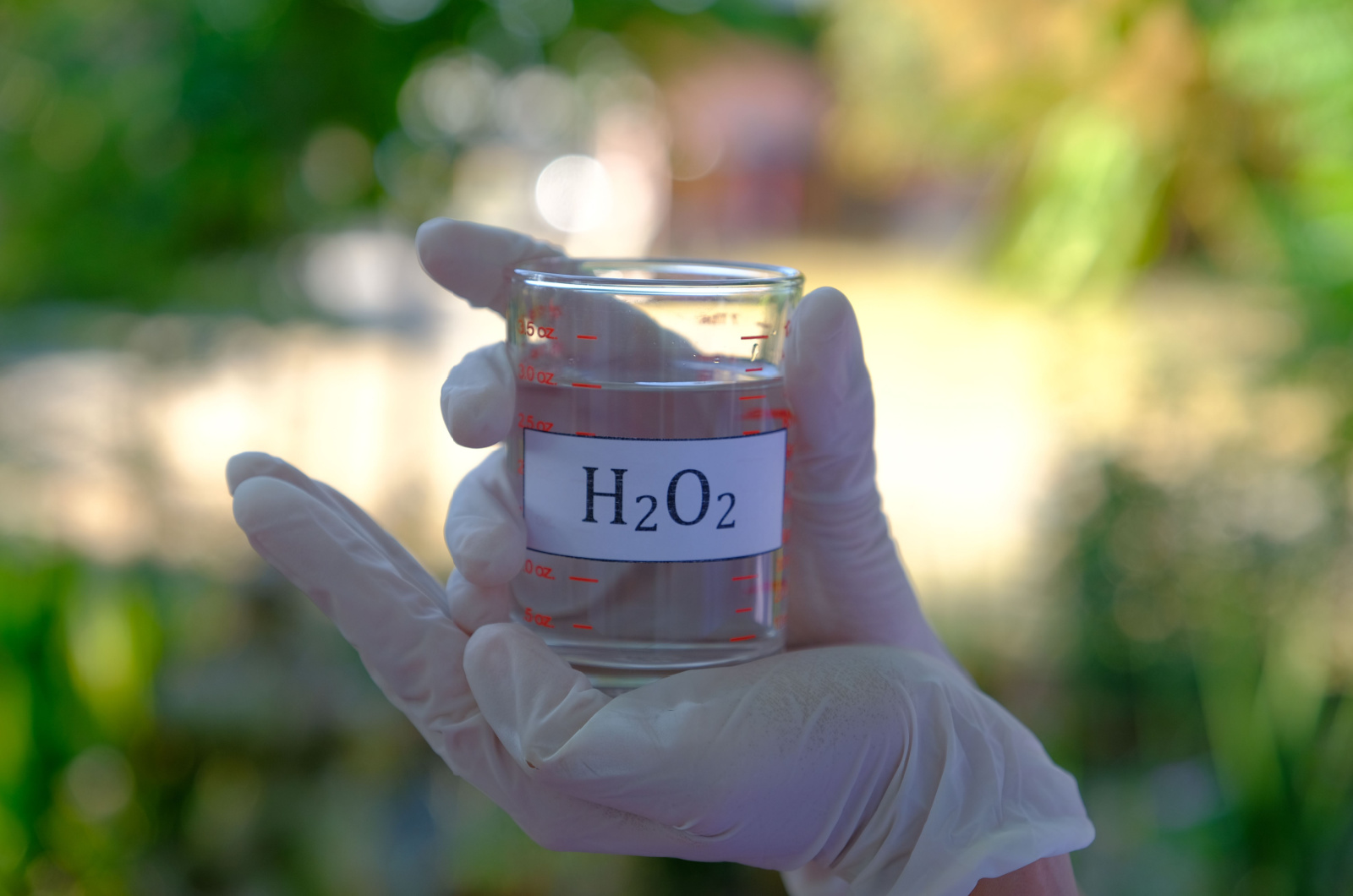Plants undoubtedly make a perfect addition to any home! But growers, especially beginners, may have a hard time maintaining the vigor and appearance of their green buddies.
Hydrogen peroxide is a secret ingredient for a happy houseplant! I’ll show you why you should always have this potent substance at hand and how to use it.
Let’s get started!
Benefits Of Hydrogen Peroxide For Indoor Plants
One of the features of hydrogen peroxide is that it acts as a disinfectant and oxidizing agent. This is the reason why it’s frequently used in pest control and disease management.
It’s very efficient in eliminating fungus gnats from the potting soil so you won’t need to use store-bought pesticides that contain toxic chemicals.
Another benefit of this substance is that it destroys harmful bacteria and fungi, especially the species that cause root rot disease.
The vast majority of houseplants require free-draining and porous soil types, and hydrogen peroxide can help you achieve this. The substance breaks down into water, fixes oxygen in the soil structure, and promotes airflow.
It will help the growing medium to retain water and prevent it from accumulating at the same time. This is an excellent feature since overly wet soils lead to root rot and similar soil-borne diseases.
As opposed to pesticides and store-bought products for disease management, hydrogen peroxide doesn’t contain toxic substances, making it perfect for our precious houseplants.
How To Prepare And Apply Hydrogen Peroxide Solution
First, you need to go to the grocery store or pharmacy and buy a bottle of 3% hydrogen peroxide. Don’t worry, this concentration won’t harm your indoor plants as long as you apply the solution correctly.
Now you have two options. The first one is to use a spray bottle for application on the leaves. The second option is to use a narrow spout; this method will allow the solution to go directly to the root system via drenching.
If your goal is to promote airflow in the soil and aid root development, then you should mix 2 parts water with one part hydrogen peroxide.
When applying the solution to your indoor plants by using a narrow spout, avoid wetting the leaves.
You can use the same ratio of water and hydrogen peroxide if you need it for pest or disease control but make sure to use a spray bottle in this case. Gently mist over the leaves and don’t forget to apply the solution to the leaves’ undersides.
Pay Attention To The Following
While hydrogen peroxide works perfectly for indoor plants, remember that it’s not the only thing you should use if you want to keep your green buddies healthy.
So, include the substance when caring for your plants but make sure to continue inspecting for pests, diseases, or any other issues.
Also, don’t forget to remove dead, diseased, or discolored foliage from your plants and ensure enough light and humidity, depending on the type of plant you have.
The last thing I would like to mention is that balance is the key. Yes, this solution works and has many benefits, but if you apply too much it can have the opposite effect.
High concentrations of hydrogen peroxide may lead to serious issues such as damaging the potting soil by affecting beneficial microorganisms and sensitive plant tissues. (1)
You can also alternate between this and other organic substances, such as compost tea or neem oil.
Natural solutions are always better than store-bought ones! Give hydrogen peroxide an opportunity, your prized houseplants will be thankful!
References
1. Xu, Xin & Zhou, Yifan & Wang, Xiaoqi & Jiang, Weitao & Qin, Lei & Wang, Jian & Yu, Haijun & Chen, Xuesen & Shen, Xiang & Yin, Chengmiao & Mao, Zhiquan. (2023). Effect of Hydrogen Peroxide on the Soil Microbial Community Structure and Growth of Malus hupehensis Rehd. Seedlings under Replant Conditions. ACS Omega.



